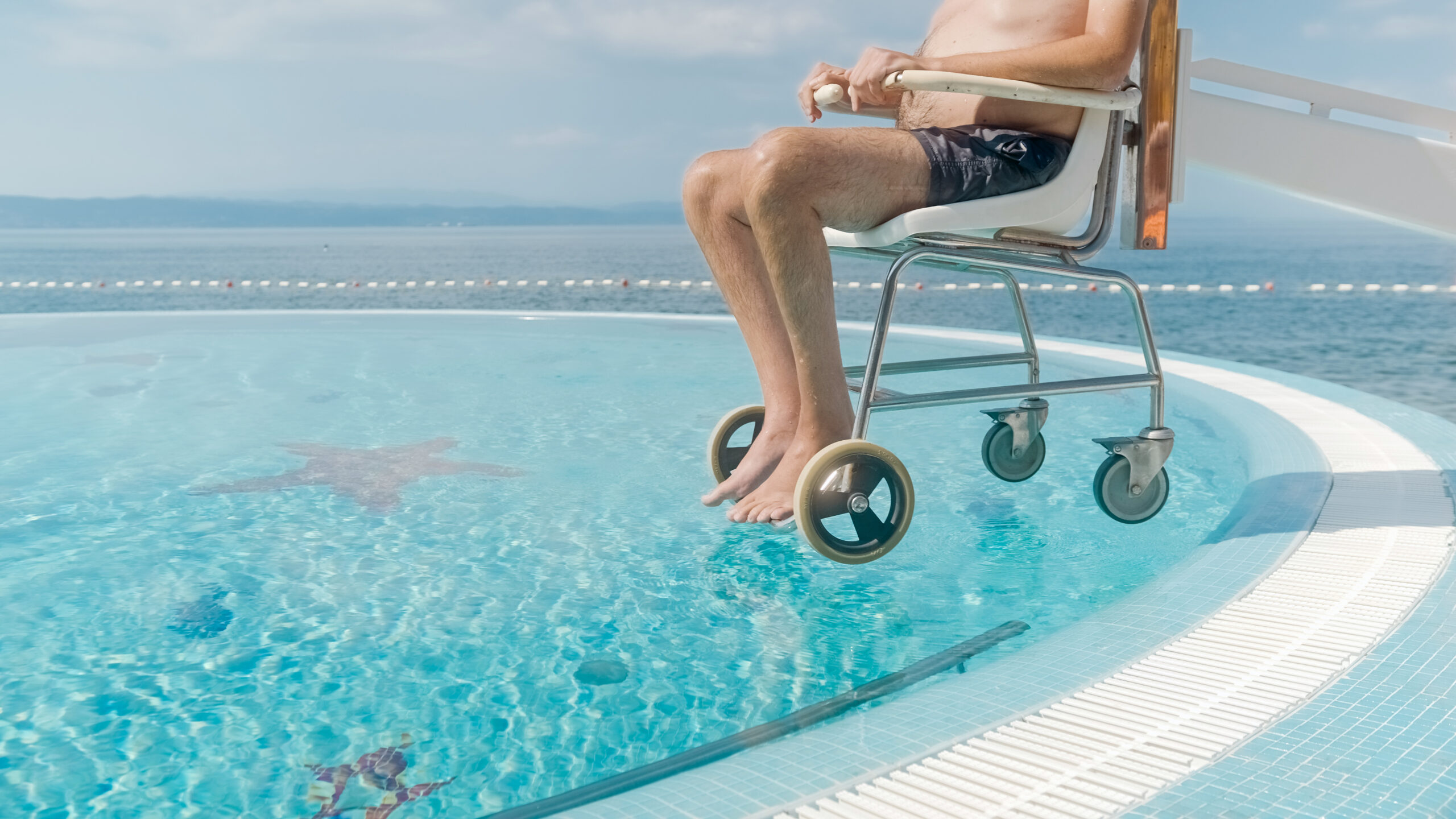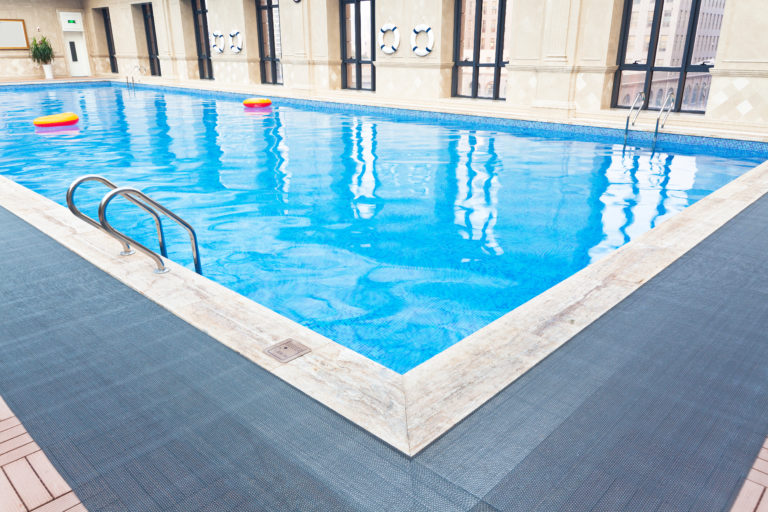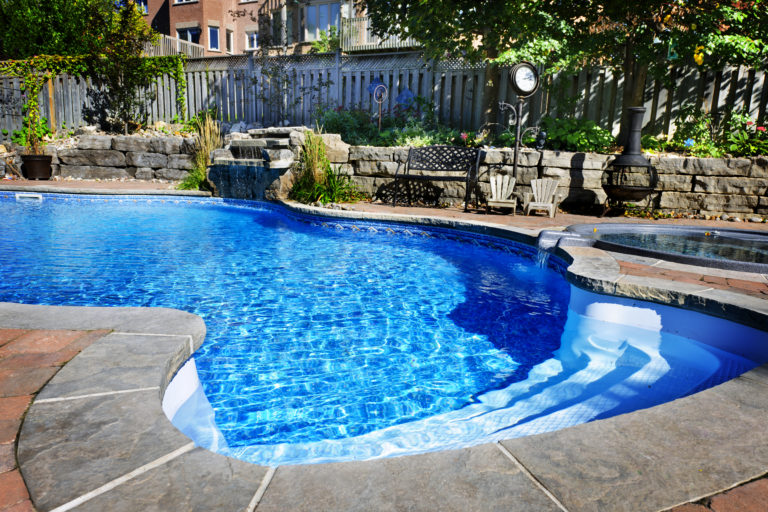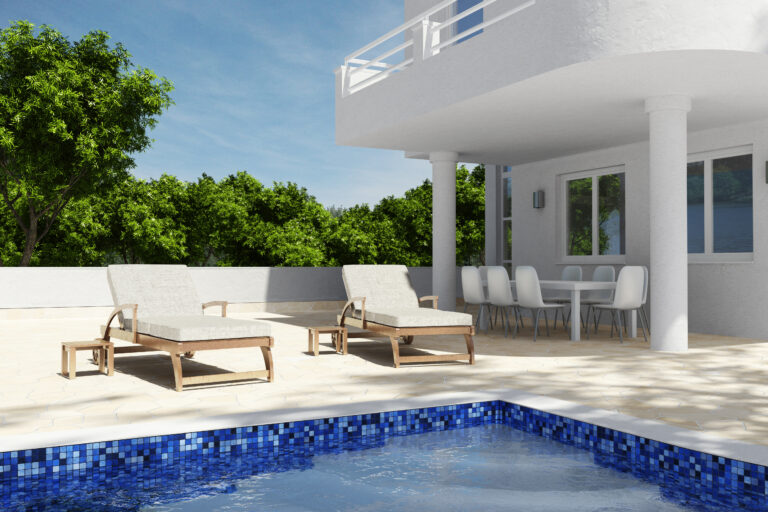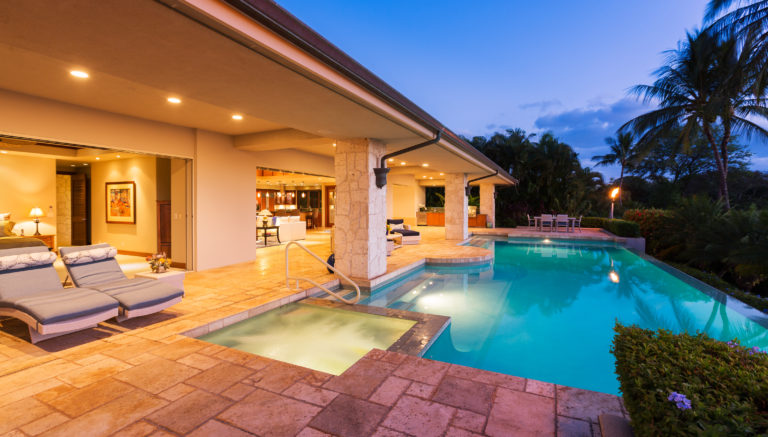Designing for Accessibility Inclusive Pool Ideas
You’re about to dive into the world of inclusive pool design. Ever wondered how to make your pool more accessible? You’ve come to the right place!
We’ll explore why it’s crucial, what elements you’ll need, and how you can overcome common challenges.
Let’s ensure everyone gets a chance to enjoy your pool, regardless of their abilities.
Ready? Let’s jump in!
Understanding Accessibility in Pool Design
You’ve got to understand that designing a pool with accessibility in mind isn’t just about compliance, it’s also about inclusivity and ensuring everyone can enjoy the water. Accessibility legislation is not something you should overlook or consider as an afterthought. It’s essential in your pool design process, helping you create an environment where everyone, regardless of their physical abilities, feels welcome and included.
Consider pool lighting. Good lighting isn’t just for aesthetics or safety; it plays a vital role in accessibility as well. For individuals with impaired vision, well-lit pools can make all the difference between feeling confident or anxious when navigating around the area.
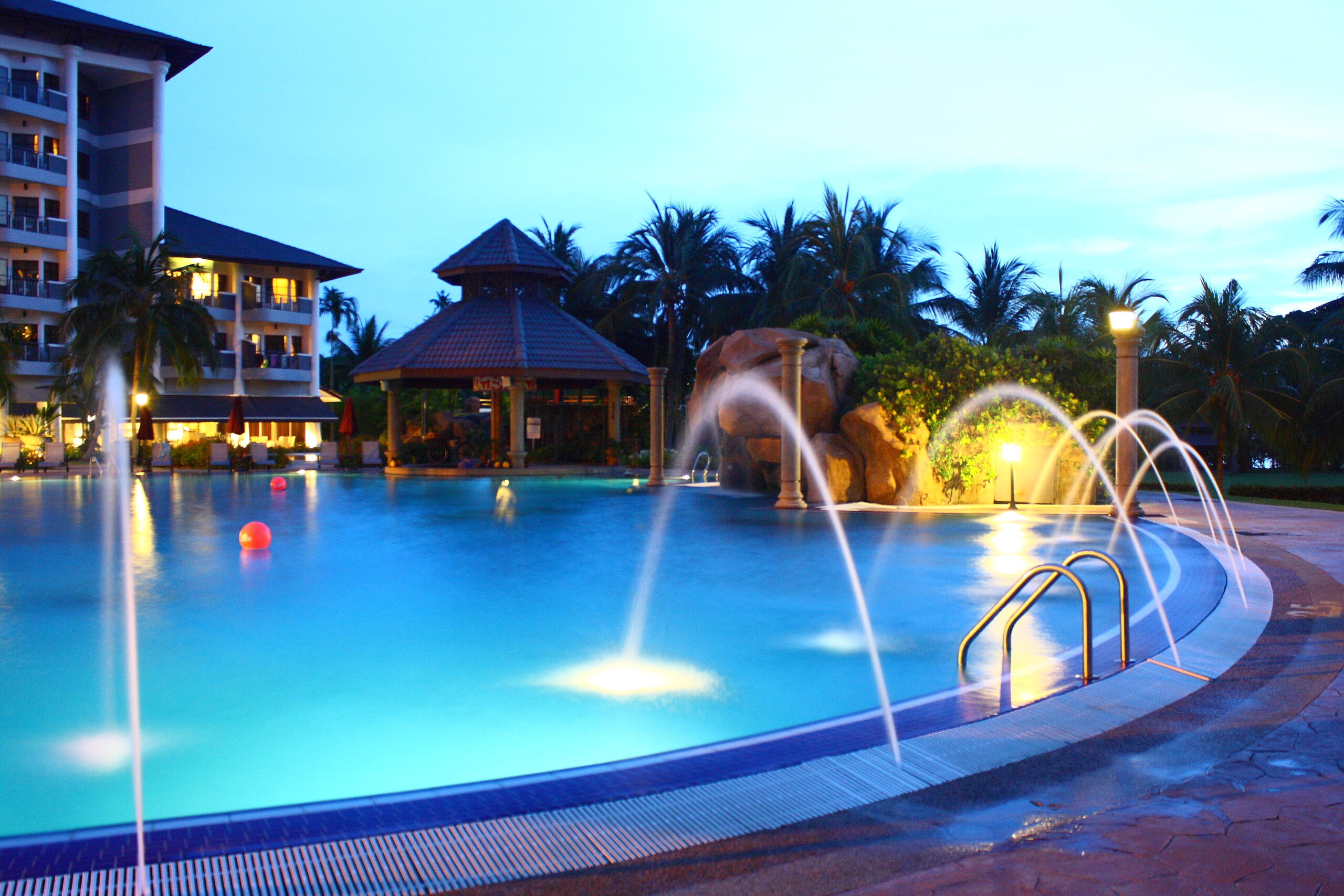
But don’t just stop at complying with accessibility legislation. Go above and beyond those standards whenever possible because designs that are more accessible aren’t only beneficial to people with disabilities; they’re useful for everyone! High contrast markings on steps and edges improve visibility for all swimmers. Gentle slopes into the water are easier to navigate than ladders for both older adults and young children.
The Importance of Inclusive Design in Pools
It’s crucial to consider everyone’s needs when planning a water-based recreation area. You must ensure that your design promotes barrier-free swimming and inclusive aquatic activities, so everyone, irrespective of their physical ability, can enjoy.
Inclusive design is not just about installing ramps or lifts; it’s about creating an environment where every person feels valued and welcomed. When you adopt such a mindset in planning your pool areas, you’re not only adhering to laws and regulations but also promoting a sense of community.
Barrier-free swimming means that those with mobility issues can access the pool with ease. Inclusive aquatic activities imply that there are programs available for people of all abilities – ones they can participate in without feeling left out or inadequate.
So remember, when designing a pool area, think inclusivity. Make sure there are no barriers to entry – either physical or psychological. Consider providing specialized equipment like chairs on wheels that move directly into the water and floating devices tailored for different needs.
Your goal should be making everyone feel they belong because inclusion isn’t just good practice-it’s good business too.
Key Elements of Accessible Pool Design
You’re about to dive into the key elements of accessible pool design.
You’ll explore important considerations for ramp access, ascertain suitable pool depths, and discover essential accessible pool features.
Get ready to make your swimming facility more inclusive and user-friendly, ensuring everyone can enjoy a splash!
Ramp Access Considerations
When you’re planning for ramp access, there’s a lot to consider such as the ramp’s slope, width, and surface. The choice of ramp materials is paramount. You need strong, durable materials that can withstand water exposure and heavy use. Non-slip surfaces are key for safety measures – think textured rubber or grip tape.
You shouldn’t overlook railing support either; it’s an essential safety measure providing stability for users with mobility challenges. Adequate lighting enhances visibility during evening hours, increasing safety.
Keep in mind the slope too; it mustn’t be too steep to ensure comfortable navigation. The width should accommodate wheelchairs easily while allowing room for other swimmers passing by.
Careful consideration of these factors ensures all pool-goers can enjoy the water safely and comfortably.
Suitable Pool Depths
Determining appropriate water depths isn’t always straightforward, as you must take into account various swimmers’ abilities and preferences.
Consider the importance of depth markers in your pool design. They’re not just for decoration, they provide essential safety information to all users. Here’s why:
– They alert less confident swimmers about increasing depths.
– They assist in enforcing pool rules (No diving in shallow end).
– They can prevent accidents by warning of sudden deep areas.
– Depth markers are crucial for safe rescue operations.
– Child friendly depths enhance kids’ safety and allow them to have fun without constant supervision.
Don’t overlook these factors when planning your pool; it’ll ensure a safer and more enjoyable swimming environment for everyone.
Accessible Pool Features
It’s essential to consider features such as ramps, lifts, and handrails that make swimming more accessible for everyone. The right pool design can open up a world of therapeutic benefits.
You’ve got to remember how vital inclusive designs are in promoting physical activity.
Imagine the freedom adaptive swimwear provides. It’s not just about floating around; it’s about empowerment. With specially designed swimwear, people with different abilities can enjoy swimming too. They’re not sidelined but rather actively participating.
And let’s not forget the therapeutic benefits of water itself. Swimming is an excellent form of low-impact exercise that improves cardiovascular health and muscle strength while reducing stress levels.
Case Study: Successful Inclusive Pool Designs
Let’s examine some successful inclusive pool designs that have made a significant impact in the industry.
Inclusive Lifeguarding is one such example where accessibility isn’t just about the swimmer, but also encompasses those safeguarding them. The concept involves providing necessary training to people with disabilities to become certified lifeguards, creating an environment of reciprocity.
Imagine being able to watch over your peers while they enjoy their time in water, regardless of your physical condition. Now that’s true inclusion! This initiative not only empowers individuals with disabilities but also enhances safety measures around the pool area.
Another breakthrough in this arena is Adaptive Swimwear. It’s specifically designed for individuals with mobility issues or certain health conditions. These swimsuits are engineered for easy wear and removal without compromising on style or comfort.
Can you picture yourself gliding through the water effortlessly? Adaptive Swimwear makes it possible! Its innovative design allows everyone to partake in aquatic activities without any hindrance.
These ideas may seem simple, but they’ve revolutionized how we perceive inclusivity at poolsides. They serve as great examples of designing with empathy, ensuring everyone gets a chance to make a splash!
How to Incorporate Accessibility in Your Pool
You’ve seen how others have done it, so now you’re ready to make your own aquatic space more accommodating for everyone.
One way you can start is by considering adaptive swimwear and how it integrates with your pool design. This doesn’t only mean creating spaces where people can change comfortably into their adaptive swimwear, but also considering how the pool’s features interact with different types of swimwear.
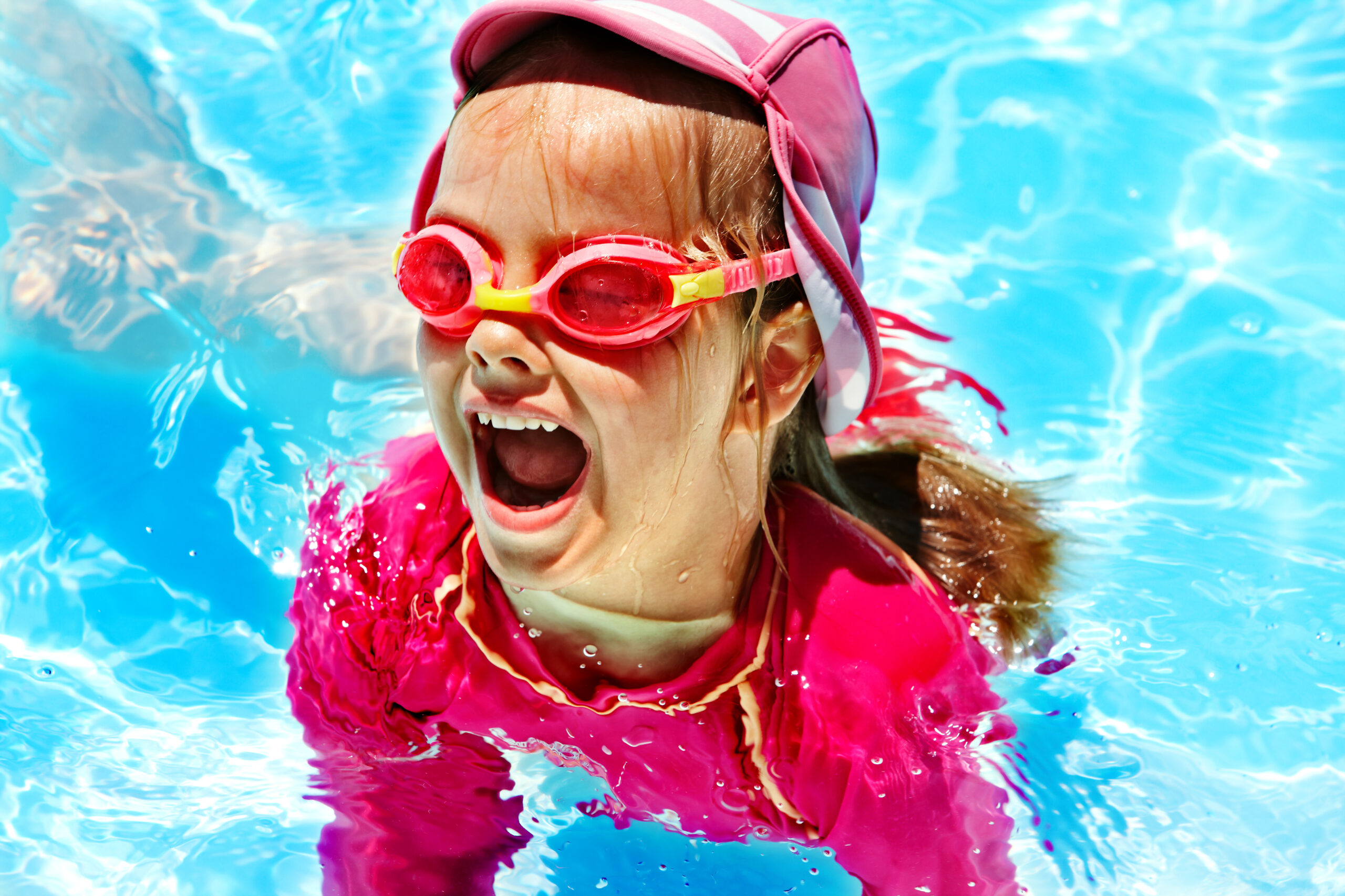
Now let’s talk about poolside safety – a crucial aspect you can’t overlook. This involves strategic placement of handrails around entry and exit points, slip-resistant surfaces, and well-lit areas that minimize shadows and dark spots. It isn’t just about preventing accidents; it’s about making sure everyone feels secure enough to enjoy themselves.
Incorporating these elements may seem like a challenge, but remember, accessibility benefits everyone. When designing for accessibility, you’re not only ensuring that friends or family members with mobility issues feel welcome in your space; you’re also adding layers of comfort and security that all visitors will appreciate.
So go ahead! Take the plunge into inclusive pool design.
Challenges in Designing Accessible Pools and How to Overcome Them
You’re about to delve into the intricacies of designing accessible pools, but first, you’ve got to understand the potential obstacles. Identifying accessibility challenges is your crucial first step, followed by implementing inclusive design solutions that cater to everyone’s needs.
Don’t worry about the cost implications just yet; we’ll address those too, helping you balance an inclusive pool design with a budget that works for you.
Identifying Accessibility Challenges
It’s crucial to identify potential accessibility challenges when planning for an inclusive pool design. Key areas to focus on include pool signage importance and lifeguard training necessities.
Pool signage isn’t just about rules, it’s about ensuring everyone can navigate your pool safely. Clear, easy-to-read signs are essential for those with visual impairments or language barriers.
Lifeguard training is not only about rescues and first-aid. It also involves understanding the unique needs of all swimmers, including those with disabilities. Lifeguards should be trained in assisting individuals of all abilities to ensure a safe and enjoyable swimming experience for everyone.
Implementing Inclusive Design Solutions
Let’s move on to implementing solutions that will make your swimming facility more welcoming for everyone. Start by adhering to Universal Design Principles and Disability Rights Legislation.
1. Implement Ramps: Replace stairs with ramps at entrance and exit points, ensuring wheelchair users can easily access the pool.
2. Install Lifts: Incorporate pool lifts or other transfer systems so those with mobility issues aren’t excluded.
3. Ensure Clear Signage: Use large, clear signage and tactile indicators for visually impaired visitors.
Addressing Cost Implications
While these adjustments might initially seem costly, they’ll ultimately broaden your facility’s appeal and could even increase patronage. It’s fairly common to worry about financial resources when considering accessibility improvements. But remember, there are several funding options available that you can explore.
Here is a simple table to illustrate some potential costs and benefits:
| Costs | Benefits |
| Equipment purchase | Increased patronage |
| Training staff | Enhanced reputation |
| Ongoing maintenance | Greater inclusivity |
Investing in inclusive design not only enhances the experience for all users but can also contribute positively to your bottom line. So don’t let cost implications deter you from making your pool more accessible and inviting for everyone. It’s a worthy investment that’ll pay dividends in the long run.
Useful Tips for Maintaining Accessible Pools
Regular upkeep is essential to ensure your accessible pool remains safe and functional for all users. Safety measures, such as routine checks on the handrails and ramps, can’t be overlooked.
A particular aspect you should pay attention to is pool lighting. It’s crucial to have optimal visibility underwater, not just for the aesthetic appeal but also for safety reasons. Here are some key points to consider:
– Pool Lighting
– Brightness: It’s crucial that your light sources are bright enough to light up the entire pool area.
– Placement: Strategically place lights so they illuminate every corner of the pool.
– Maintenance: Regularly check if any bulbs need replacement and clean the lenses from algae or other build-ups.
– Safety Measures
– Handrail Stability: Ensure that all handrails are secure and sturdy.
– Slip Resistance: Regularly check surface traction around the pool area.
– Emergency Equipment: Keep life-saving equipment easily accessible at all times.
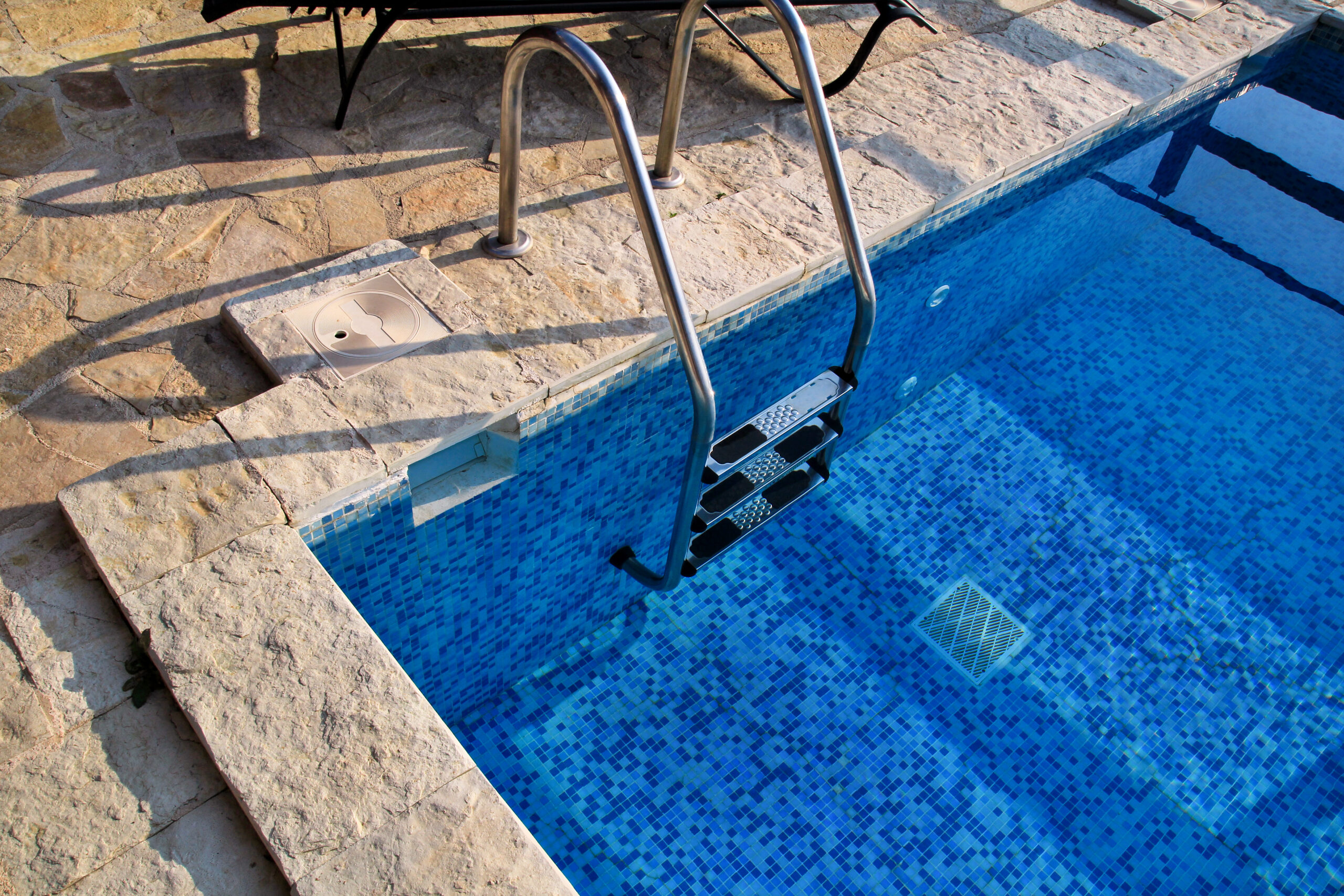
The Future of Accessible Pool Design
You’re likely curious about what’s on the horizon for creating more user-friendly swimming environments. Well, exciting advancements are taking place in adaptive swimwear and assistive technology that will revolutionize pool accessibility.
Adaptive swimwear is becoming increasingly innovative with designs that facilitate movement in water. You’ll find swimsuits with features like magnetic closures, adjustable straps and areas to accommodate medical devices.
Assistive technology advancements are also promising. Imagine automated lift chairs or portable ramps aiding your entrance and exit from the pool. Think of wearable devices providing real-time feedback on your swimming technique, or underwater wheelchairs enhancing mobility.
Let’s look at some cutting-edge concepts:
| Adaptive Swimwear | Assistive Technology |
| Magnetic Closures | Automated Lift Chairs |
| Adjustable Straps | Portable Ramps |
| Accommodations for Medical Devices | Underwater Wheelchairs |
The future of accessible pools is bright and full of potential! Keep an eye out for these developments that could make your swimming experience more enjoyable than ever before.
Frequently Asked Questions
What Are the Costs Associated With Designing an Accessible Pool?
You’ll need to invest in accessibility features like ramps and lifts, which can be costly. However, the inclusive design benefits outweigh these costs, making your pool enjoyable for everyone regardless of their physical abilities.
How Does the Size and Location of the Pool Affect Its Accessibility Design?
The size and location of your pool directly influence its accessibility design. Larger pools offer more room for accessibility features integration. Pool design variations in different locations may also affect the ease of access.
What Are Some of the Legal Requirements for Accessible Pool Design?
When considering legal requirements for accessible pool design, you’ll face ADA Compliance Challenges. These rules mandate ramps, lifts, and wider entry points. However, there’re inclusive design benefits like broadening your customer base.
Are There Any Special Permits or Certifications Needed to Build an Accessible Pool?
Yes, you’ll need special permits to integrate accessibility features and adaptive swimming equipment into your pool. Each locality has its own regulations, so it’s best to check with local authorities before starting construction.
Can Existing Pools Be Renovated to Be More Accessible and Inclusive?
Yes, you can absolutely renovate existing pools for greater accessibility. Adaptive equipment options exist to aid this process. Therapeutic pool benefits can be enjoyed by everyone with these inclusive renovations.

